4 Ways to be Sustainable When Designing Your Home
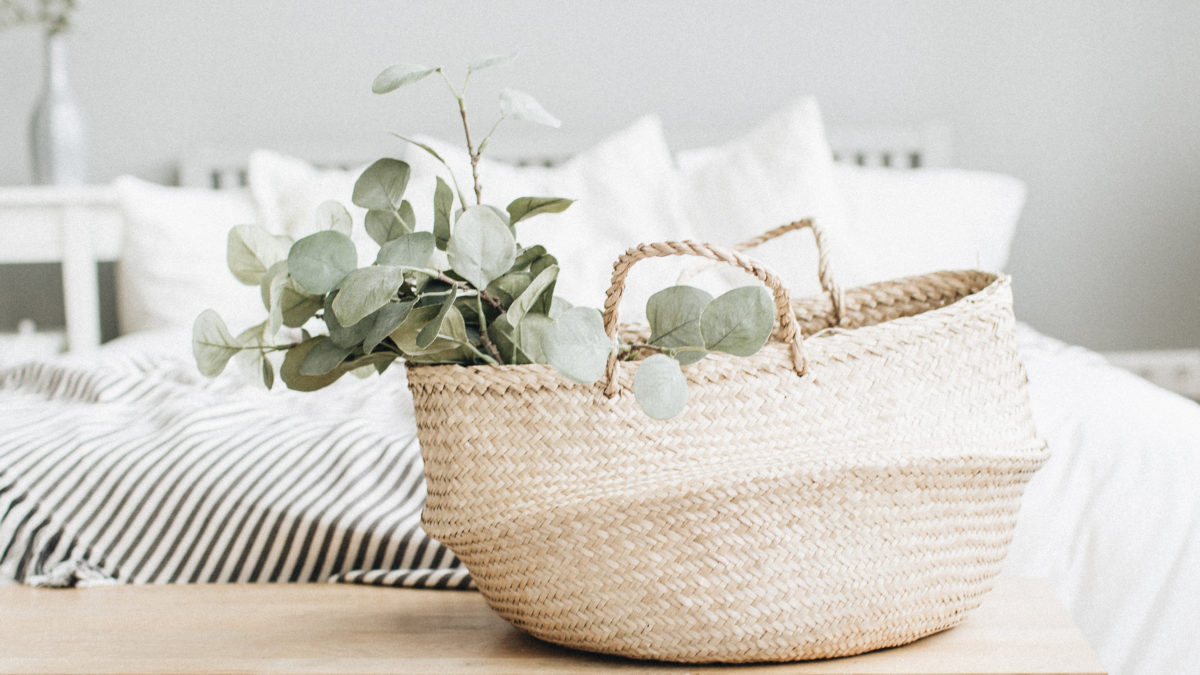
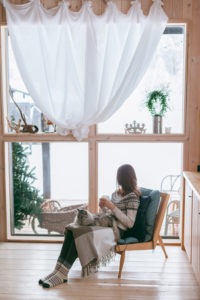
Photo by Photo7180
As an interior designer I get to see a lot of the choices we make around the products that come into and leave our homes and over time it has become something that has nagged at me. The way we build, decorate and live in our homes has such a significant impact on the environment due to the process of creation, performance and end of life cycle. I’m assuming that if you are reading this you are keen to make a difference somehow. It requires a little more effort but you don’t have to be someone who can fit all of their rubbish for a year into one jar (hats off to those guys). Through some refocusing and adjustments you can make a difference. And just so you know while I’ve made changes in my own daily habits I’m not a saint in this department. When I focused on my own activities I was embarrassed and definitely have a long way to go. However, I thought, just because I’m a work in progress doesn’t mean I shouldn’t share what I know. After all we’re all works in progress all of the time aren’t we?
So where to start? It is a big topic which I cannot possibly cover in depth in one post. But lets start with considering the cycle of products. Currently the most common cycle is linear. A product is produced somewhere in the world, using water, chemicals, energy, labour force, to be packaged and transported to you. Due to the consumer centric industry based in seasonal buying you keep it for a season maybe a few, and then it goes to land fill. But what if our behaviour was focused on longevity and a circular product life cycle?
You may already be aware of some of the fashion industry changes that are occurring, like “slow fashion”. There are companies making extraordinary strides in this area. For example Christy Dawn clothing brand up-cycle clothes, use carbage (left over off cuts of fabric from other brands), natural dyes and have employed farms to grow organically for fabric manufacture. As a consumer you may wonder what control you have over the way things are manufactured. But you have so much power because every time you spend you are voting with your dollar and by being informed about what you’re buying you can vote in a meaningful way.
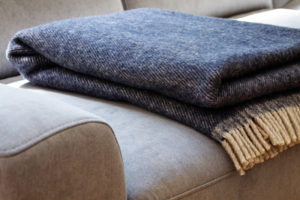 Choose for Longevity
Choose for Longevity
Firstly, when it comes to designing we need to stop purchasing for the season or current trend. Instead, design with longevity in mind. Bring back the idea that you are purchasing to build a home that will last you for decades. Blankets that will see you through many winters and a kitchen that will serve you through a multitude of Christmas’s. Build and buy with durability in mind. Look to buy quality built products that will actually last more than one season. I hear the parents among you worrying about things that might be stained, like your beautiful rug. Yes, you should absolutely take this into account. Products need to be easy to clean and maintain for longevity. You will pay more right now, but you will only buy once.
If you’re building, design your home with flexibility in mind. Ensure it serves you now and in ten years when your children leave home. Rather than building a large home with a significant footprint, design rooms to do double duty, like offices that become guest rooms when needed.
You cannot ignore the issue of style shift which is so centric to the way we live now. In order to design for longevity you instead need to design in a classic manner that will age gracefully. If you’re not sure what a long lasting style is, be sympathetic to the architecture of your home and consider the styles that were with us 100 years ago and are still hanging about. My recommendations would be paired back country, plantation, hamptons or mid century (Frank Lloyd Wright inspired). Select colours, materials, textures and shapes inspired by nature because nature never goes out of fashion. Ultimately though, create a space that sparks joy in you.
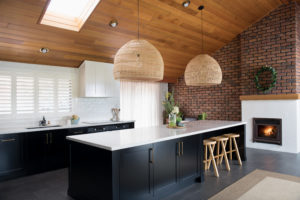
Modern country style kitchen designed by Elska Interiors and Missives Design Studio.
Check the Eco Credentials
Now before you invite a new product into your home consider the path it has walked to reach you. Was the material from a sustainable crop or recycled product? What chemicals were used to grow the crop? How far did the item have to travel? What type of energy was used to produce this product and what do they do with their waste? Did the company use fair trade agreements? Was the water recycled and did they protect vulnerable water ways? There are farmers and producers, often from much poorer countries than ours, going above and beyond to meet standards so do them the courtesy of checking for a label and choosing eco. To make life a little easier Eco Label Index have compiled a list of the eco labels and what they mean for us ( www.ecolabelindex.com/ecolabels/?st=country,au ) and here are some of my favourite suppliers:
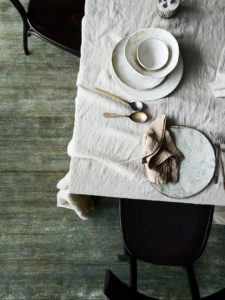
Armadillo & Co not only say their products lie lightly on this earth, they walk the talk. Their products are made from natural or recycled materials in a hand made manner. Their work force are Indian farmers who work on the rugs in their off season. Armadillo and Co put money back into these communities through schooling and clothing opportunities for the children, supporting a new generation.
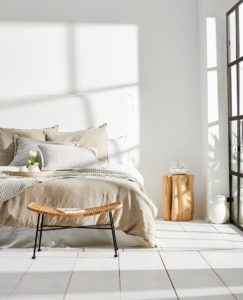
Papaya create beautiful, timeless home wares and furniture from natural products in a sustainable way. The honest simplicity of their home wares means they will be treasured items that do not date over time.
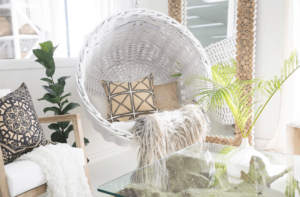
Bandhini homewares are again beautifully designed using natural textiles & eco safe dyes. Better still they have a range of durable cushions that are filled with GECA-certified inserts made of plastic bottles making them 100% recyclable.
Keep it, mend it, love it
The Japanese have a wonderful philosophy around repair called Kintsugi (金継ぎ, “golden joinery”), also known as Kintsukuroi (金繕い, “golden repair”) where the intent is to repair pottery with gold so that the mended join can be seen and becomes part of the story of the piece. Don’t be so quick to throw out and buy new. Shop second hand or consider if what you own can be repaired or reused in a simple way. Furniture can be repainted or recovered with wonderful results. You will find that homes layered with found items over time are better at telling your story and will feel less curated.
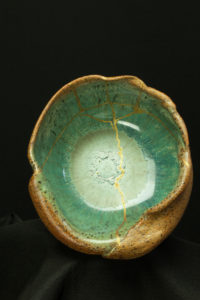
This is a handmade bowl that was broken and repaired using the Japanese art form of kintsugi using a gold powder.
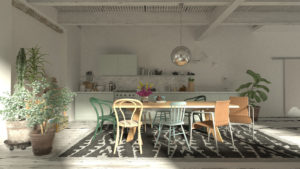
Photo by Stephen Karg
End of life
While these ideas around designing for longevity are excellent and need to be first point of call it is true that sometimes the item is no longer fit for purpose regardless of our handyman skills. This is when we need to be considerate of the possibilities for circular life cycles for products. That is, the opportunity for an item to move to a different purpose once it is not useful for it’s original purpose. Fabrics from clothes are being recycled into insulation and recycled stone is becoming beautiful terrazzo. Plastic is being remade into rugs and human limbs. A very simple change I’ve made in my own home is using my old tea towels (which can be washed and reused) instead of paper towel. There is almost always another life available that isn’t landfill. Look to your local recycling centres and see if there is a way a product can be recycled.
As I said at the beginning I don’t anticipate that you or I will become complete minimalists, however I do believe that if we were all to start making some change we will have a positive effect. Good luck eco warrior.
xo Bec

